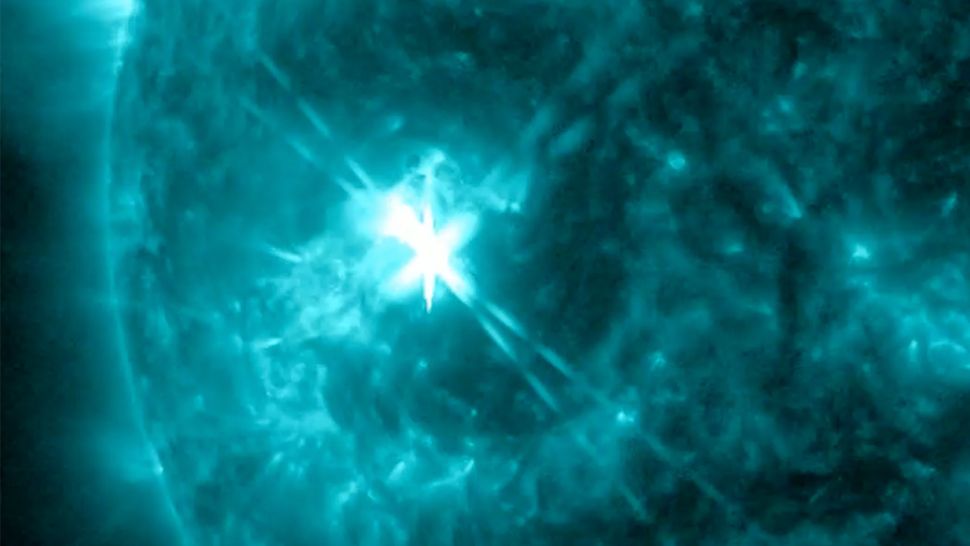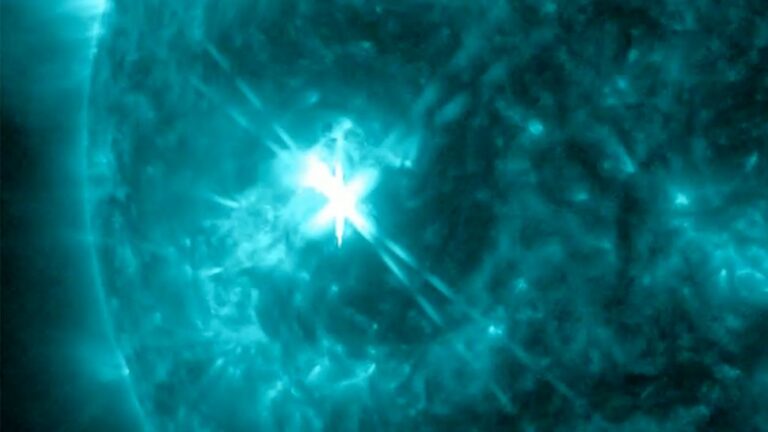Video shows recent major X-class solar flare eruption from the Sun.
The X1.1-class solar flare created a temporary radio blackout over South America.
On Saturday (Feb. 11), a major solar flare erupted from the sun, causing a radio blackout in some areas of Earth and indicating the possibility of more flares in the future. The powerful X1.1-class event was observed at its peak at 10:48 a.m. EST (1548 GMT) on Saturday, as reported by the U.S. Space Weather Prediction Center (SWPC) operated by NOAA. The flare came from Active Region 3217 on the sun, causing a brief radio blackout over South America. The event was captured on video by NASA’s Solar Dynamics Observatory. SWPC officials warned that this region may cause more flares that can cause degradation of high frequency (3-30 MHz) communication as it moves across the sun.

Solar flares are eruptions of charged particles on the sun that can vary in intensity, with smaller A-class and C-class flares denoting minor events while the more powerful M-class flares can result in intensified auroras visible on Earth. The strongest type of solar flare is the X-class, and the most powerful X-class flare ever recorded was an X28 event in 2003 that overwhelmed the sensors measuring it. Additionally, intense solar flares can result in coronal mass ejections (CMEs) that eject large amounts of solar material away from the sun at speeds of up to 1 million mph. When these events are directed toward Earth, they can disrupt communications systems, power stations, and pose a risk to satellites and astronauts in space.
Spaceweather.com, a website that monitors space weather events, reported that the X1.1 solar flare that occurred on Saturday was not associated with a coronal mass ejection (CME). However, the website indicated that a different event, namely the eruption of a solar filament in the northern hemisphere of the sun, did produce a CME that is expected to reach Earth on February 14. The arrival of this CME could result in more vivid auroras.
“Arctic sky watchers could get a light show for Valentine’s Day,” Spaceweather.com wrote.
Do not forget to share your opinion with us to provide you with the best posts !




When someone writes an article he/she retains the image of
a user in his/her mind that how a user can know it.
Therefore that’s why this paragraph is perfect.
Thanks!
Hi my loved one! I wish to say that this post is awesome,
nice written and come with approximately all vital infos.
I would like to see extra posts like this .